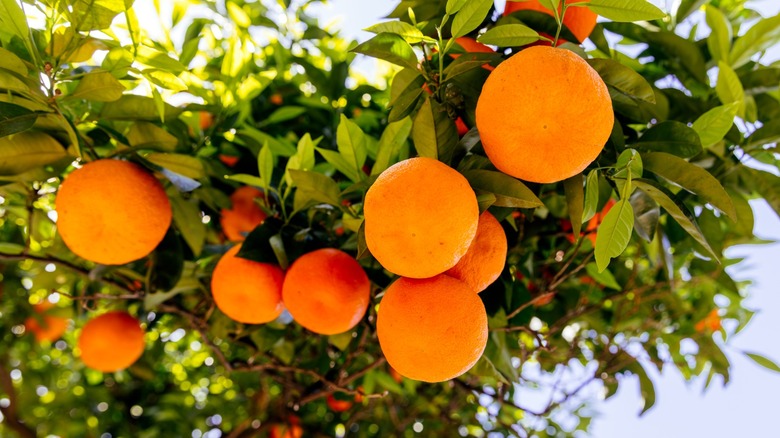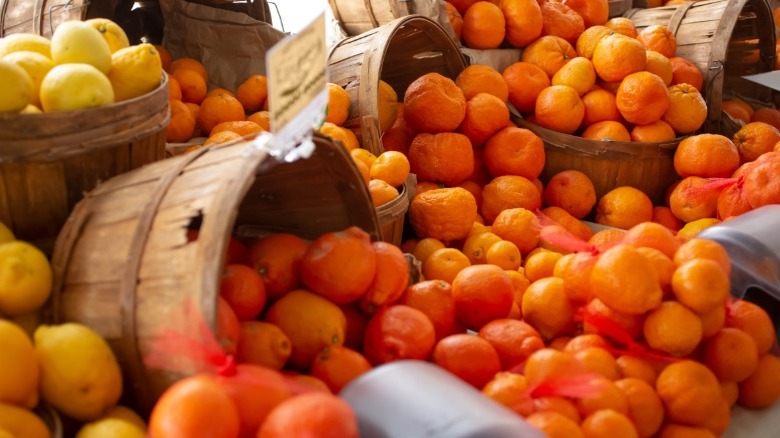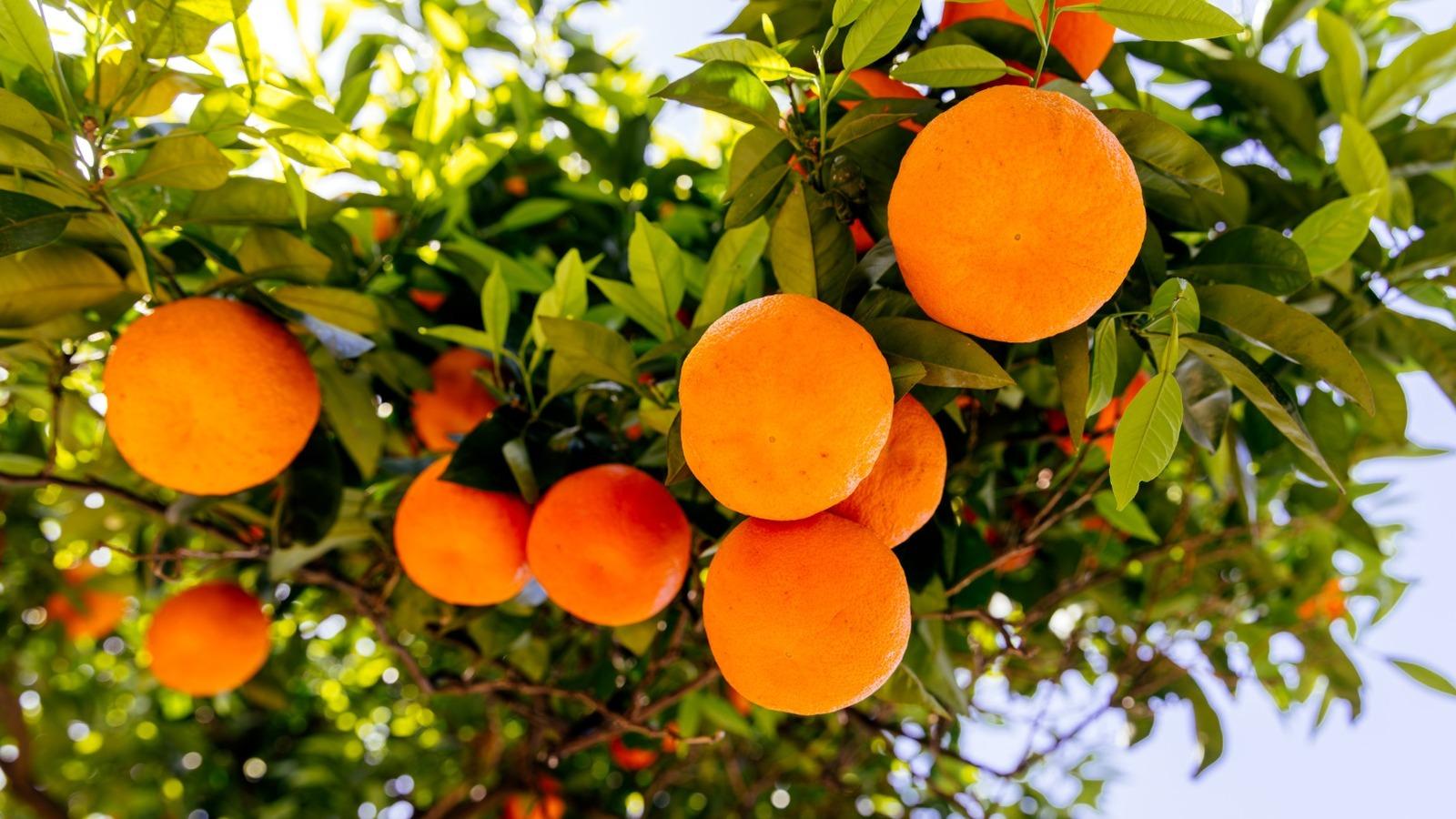
Alexander Spatari/Getty
Citrus, and more specifically oranges, are the most famous food in Florida. The fruit is so intertwined with the identity of the Sunshine State that the official beverage of Florida is orange juice. So, you might think this corner of the country is the clear winner when it comes to cultivating this food. In reality, Florida is far out-produced by another state that gets lots of sun: California.
According to the USDA National Agricultural Statistics Service, for the 2023-2024 growing season, California was responsible for 79% of all citrus production in the United States. For oranges specifically, the Golden State produced 47.5 million boxes, whereas Florida only yielded 18 million boxes. After Florida, Texas and Arizona had the highest outputs of the fruit, but only accounted for 4% of the total citrus production.
A number of types of oranges are grown in California, including navel, Valencia, and blood varieties. While massive juice brands like Tropicana buy a large portion of Florida's oranges, California is mostly responsible for the country's supply of navel oranges, which are typically eaten fresh. The state's Mediterranean-like climate makes it perfect for growing the fruit, which thrives thanks to moderate and cool winters and warm summers. Additionally, oranges are one of California's most notable international exports. Farms there supply countries including Japan, China, South Korea, and Canada. This generates a significant amount of money for the state's economy — think billions of dollars — and supports many jobs.
The history of citrus in California

Photography By Tonelson/Getty
The very first citrus fruits came to California in 1769, but the earliest orchard didn't arise until years later in 1804 at a mission east of Los Angeles. The 1840s marked another important shift. That's when the "granddaddy" of California's citrus industry, William Wolfskill, established a commercial citrus farm. As the 19th-century Gold Rush attracted miners to the state, demand for the fruit increased.
But, the industry didn't truly take off in California until the navel orange emerged in the 1870s. This variety originated from a Brazilian tree whose cuttings were grown and sent to Eliza Tibbets (a Riverside-based suffrage activist) in 1873. By 1901, there were approximately 4.5 million citrus trees in the state, and navel oranges made up the majority. Almost all of the ones that exist in California today California are related to Tibbets' trees. However, it wasn't all sunshine for the orange business.
After World War II, Southern California started to become more urbanized and citrus tristeza virus wiped out a large number of orange trees. The disease attacks quickly, causing the fruit and tree to exhibit symptoms like withering and yellowing. By 1956, the total citrus acreage in California had decreased by 100,000 acres. The population recovered with a second citrus surge in the 1970s. Since then, the total acreage of orchards has remained relatively stable despite the continued risk for diseases and pests.



